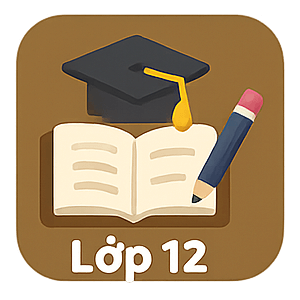Giáo án tiếng Anh lớp 12 Tuần 7 sách mới
Giáo án tiếng Anh lớp 12 chương trình mới Tuần 7
Nằm trong bộ tài liệu Giáo án môn Tiếng Anh 12 theo tuần năm 2019 - 2020, tài liệu giáo án tiếng Anh gồm tiết chữa bài kiểm tra 1 tiết số 1; Lesson 1 Getting Started; Lesson 2: Language Unit 3: The Green Movement giúp quý thầy cô chuẩn bị kỹ lưỡng mục tiêu, kiến thức trọng tâm có trong 3 tiết học tuần 7 lớp 12 hiệu quả.
TIẾT 19: WRITTEN TEST 1 - CORRECTION
TIẾT 20: UNIT 3: THE GREEN MOVEMENT
LESSON 1. GETTING STARTED
A. Objectives:
1. Language focus: To help Ss toknow the overall topic of Unit 3: “The green movement”, some vocabulary related to The green movementand its features
- To check students’ comprehension thorough True / False
- To help learners get started with some language items in Unit 3
2. Skills: - To help learners get started with 4 skills in Unit 3.
- Reading: Reading for general ideas and specific information about soot pollution.
- Speaking: Discussing lifestyle choice and deciding if they are environmentally friendly.
- Listening: Listening for general ideals and specific information.
- Writing: Writing an essay about the advantages and disadvantages of a green lifestyle.
3. Attitudes: - To help Ss get started for Unit 3 with the topic "The green movement"
- To provide Ss some motivation
B. Preparations: - Teacher: Handouts, textbook, lesson plan, pieces of papers and cassette.
- Students: Textbook
C. Methods: - The whole lesson: Integrated, mainly communicative.
D. Procedures:
|
Time/Stages |
Activities |
Interactions |
|
1. Warm up 5 minutes |
To elicit some of their ideas of what a green lifestyle is. To look at the picture and guess what the students in the picture are talking about. |
T <--> Ss |
|
2. New lesson 7 minutes
10 minutes
8 minutes
12 minutes |
Activity 1: Listen and read - T tell Ss that they are going to listen to a conversation between Kevin, Maria, and Mai about a green lifestyle. - T plays the recording - Ss listen and read silently. Activity 2: True-False- Not given Statements - T asks Ss to work in pairs to decide whether the statements are true (T), false (F) or not given (NG). Sts do as required, they may refer back to conversation to get the necessary information. Key: 1. T 2. NG 3. F 4. NG 5. T 6. F Activity 3: Combine each pair of sentences using the word in bracket. - T asks Ss to read the simple sentences and focus on the words (conjunctions) given in brackets. - Ask Ss to combine the sentences and then have them read their compound or complex sentences to check their answers. Key: 1. Some chemical…………surfing but they affect the……. 2. We should……resources because they………… 3. We are…..habitats, which will help…………. Activity 4: Identifying information - Ss work out the meaning of the new phrases from the context. - T asks Ss to work individually. - Sts read the meaning of each noun phrase, and then read all the conversation again to find the correct phrase. - T has Ss write the correct phrase next to the meanings given. - Ss compare their answers in pairs or groups. - T checks answers as a class. Key: 1. Dangerous climate change. 2. renewable resources 3. eco-friendly products 4. hazardous chemicals 5. green technology |
T <--> Ss
Whole class
Individually
T <--> Ss
Individually or Pair work
T <--> Ss
Individually
T <--> Ss
|
|
3. Consolidation 2 minutes |
- Ask Ss: What have you learnt today? What can you do now? - Summarize the main points of the lesson. |
T <--> Ss |
|
4. Homework 1 minute |
- Ask Ss to learn by heart the words or phrases related to the topic - Prepare for the next lesson. |
T <--> Ss |
E. Evaluation:
......................................................................................................................................................
TIẾT 21: UNIT 3: THE GREEN MOVEMENT
LESSON 2. LANGUAGE
A. Aims and Objectives:
1. Language focus: - To provide learners some language items in Unit 3
- For vocabulary, that is words and phrases related to the green movement
- For pronunciation, that is assimilation in connected speech
- For grammar: compound and complex sentences. And relative clauses with which.
2. Skills: - To promote Ss to develop the skill of working in pairs and groups
3. Attitudes: - To encourage Ss to work harder - To provide Ss some motivation
B. Preparations: - Teacher: Handouts, textbook, pieces of papers, lesson plan and cassette.
- Students: Textbook
C. Methods: - The whole lesson: Integrated, mainly communicative.
D. Procedures:
|
Time/Stages |
Activities |
Interactions |
|
1. Homework 3 minutes |
- T sticks cards with words on them to the board, asking sts to try to remember as many words as they can. clutter - mould and mildew - preservation – depleted – pathway - dispose of - asthma - conservation - After 1 minute, T removes the cards. - Sts volunteer to read the words as they remember. |
T <--> Ss |
|
2. New lesson
5 minutes
7 minutes
12 minutes
15 minutes |
A. Vocabulary: Activity 1: Read the conversation in GETTING STARTED again and match each word and phrases with its meaning. - T ask Ss to work individually, read each word or phrase. - Sts read explanations and decide a verb, noun, or adjective. - T can provide support by encouraging Ss to use the context and clues in the conversation. - T asks Ss to study the context in which the words or phrases in 1 have been used. Key: 1c 2d 3g 4e 5b 6h 7f 8a. Activity 2: Complete the sentences with the correct forms of the words and phrases in 1. - Sts do as required, bearing in mind a verb or a noun must be used its suitable form (e,g. verb tense, singular or plural form of nouns). - T asks Ss to complete the sentences individually. Alternatively, in a weaker class, T has Ss work on the sentences in pairs. - Sts find the suitable words to fill in the gaps. - T checks answers as a class. Key: 1. pathway 2. mould and mildew 3. preservation 4. dispose of 5. deplete B. Pronunciation: Assimilation Activity 1. Listen and repeat, paying attention to the ending and beginning sounds in red. : - T explains the process of assimilation (Ss should not intentionally change the ending sounds as described.) - T plays the recording - Sts listen and follow - Sts repeat as a class. - T asks Ss to work in pairs and take turns pronouncing. - Sts try to say them as naturally as possible. Activity 2: Listen and repeat the following sentences, paying attention to the assimilation indicated in bold. - T can extend this task by having Ss take turns reading each of the sentences twice: 1. slowly, trying to enunciate the sounds clearly and avoid any assimilation 2. quickly, trying to blend the final and initial sounds. Sts do as required, asking their partners to listen carefully and identify any assimilated sounds. 2. Grammar: Simple, compound, and complex sentences Activity 1: Identifying types of sentences Work in pairs and decide whether the following are simple, compound or complex sentences and tick the right box. - T asks Ss if they can remember the differences between simple, compound and complex sentences. - Ss work in pairs to figure out the answers. - T monitors the activity and helps Ss, check answers as a class Key: 1. Simple 2. Compound 3. Complex 4. Simple 5. Complex 6. Complex Activity 2: Combine the following simple sentences, using words from the box. - T asks Ss to do the activity individually. - Sts do as required, paying attention to the meaning. Key: 1. If we all adopt a green lifestyle, we will help conserve our natural resources. 2. Some foods taste good, but they do not have many nutrients. 3. We should keep the school air clean because this will improve students’ concentration and help them to learn better. 4. Germs can cause infections in parts of our body and make us feel unwell. 5. When we all start conserving the environment, we can all enjoy better living conditions. 6. Coal, which is still used in a lot of power plants, remains one of the most important energy sources. Relative clauses with which Read the Do you know…? And explain the difference between which defining something in the main clause and which defining the whole idea of the main clause. Main clause, which + relative clause Note: In relative clauses, the relative pronoun which can be used to define the whole idea presented in the main clause. It is usually separated with a comma after the main clause. Activity 3: Combine the following sentences using which - Ss do the activity individually - T Monitors the activity and helps Ss, if necessary. Key: The water in this river is being seriously polluted, which places some species of native fish in danger of extinction. Burning coal is the main source of carbon dioxide emissions, which can cause global warming. The air in most classrooms in this school contains a lot of harmful gases, which is very worrying as many young children are studying here. We should all go green by practicing the 3Rs: reduce, reuse and recycle, which is always encouraged by environmentalists. Illegal dumping is strictly prohibited in the town, which has helped to keep our environment clean and green. Young people are starting to practice simple green living, which will help to save our planet for future generations. |
Individually
T <--> Ss
Individually
T <--> Ss
Individually/
or
Pair work
T <--> Ss
Pair work
T <--> Ss
Individually
Ss <--> Ss
T <--> Ss
Ss <--> Ss
Individually
T <--> Ss
|
|
3. Consolidation 2 minutes |
- Ask Ss: What have you learnt today? What can you do now? - Summarize the main points of the lesson. Expected answers: I can use: Assimilation in connected speech Compound, complex sentences / Which as a connector |
T <--> Ss |
|
4. Homework 1 minute |
- T asks Ss to do exercises again at home. - Prepare for the next lesson. - Complete Exercises in workbook. |
T <--> Ss |
E. Evaluation:
......................................................................................................................................................
Trên đây là Giáo án tuần 7 môn tiếng Anh 12 mới.
Xem thêm giáo án tiếng Anh 12 cả năm tại: Giáo án tiếng Anh 12 chương trình mới cả năm. Mời bạn đọc tham khảo thêm nhiều tài liệu ôn tập Tiếng Anh 12 khác như: Để học tốt Tiếng Anh lớp 12, Bài tập Tiếng Anh lớp 12 theo từng Unit trực tuyến, Đề thi học kì 1 lớp 12, Đề thi học kì 2 lớp 12,... được cập nhật liên tục trên VnDoc.com.





